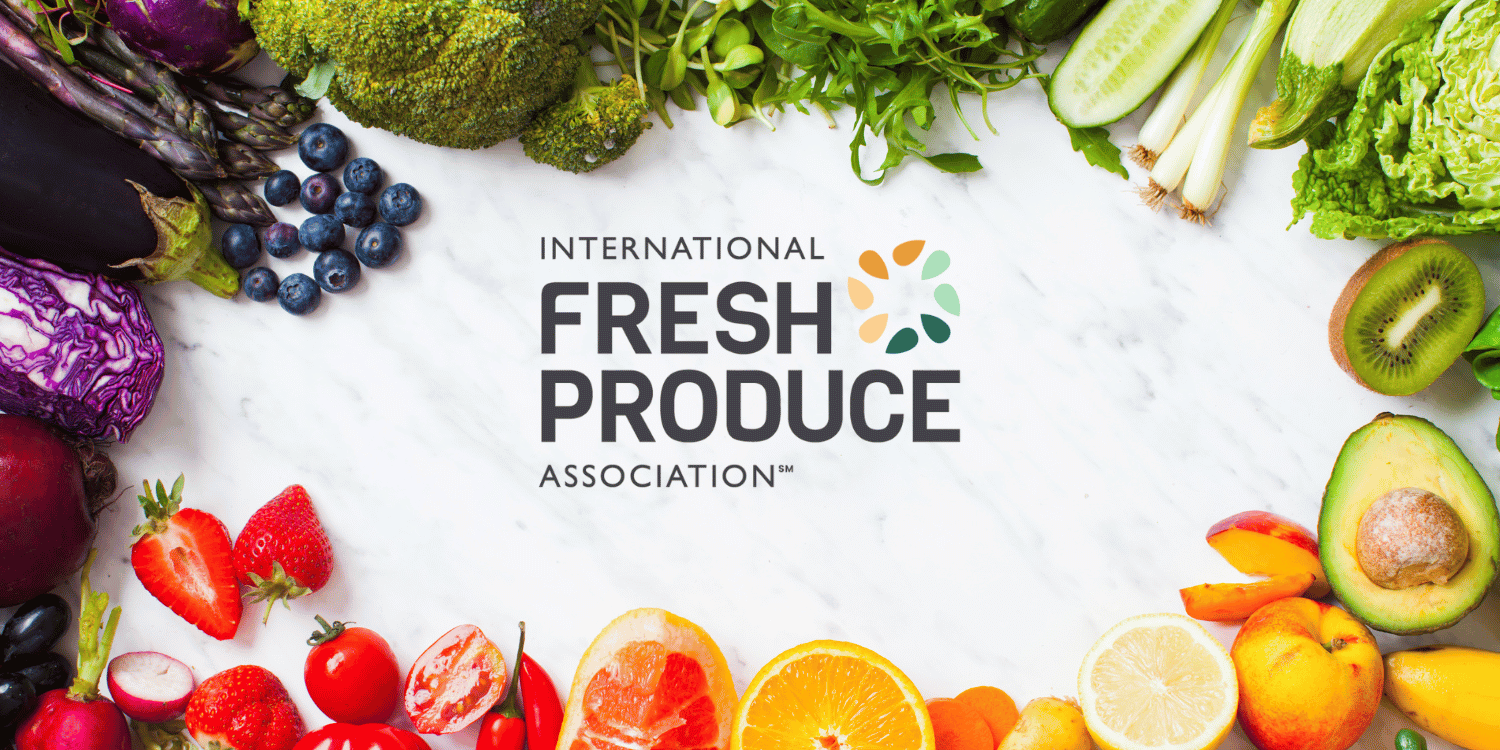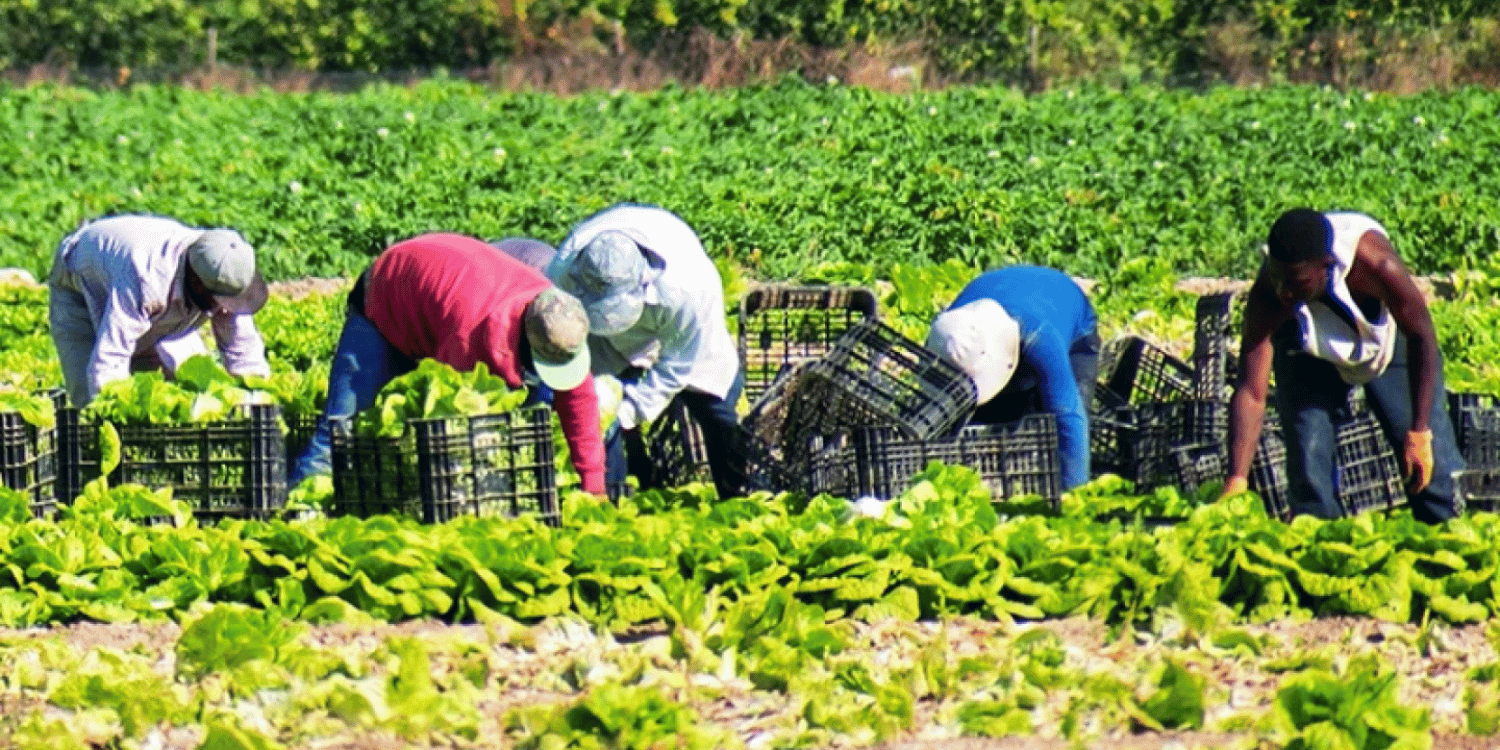Foodborne illnesses pose a considerable risk to public health, affecting millions of people worldwide each year.
Endeavors constantly take place to reduce this health risk through various safety measures.
One of these instrumental measures is the formation and strict enforcement of food safety policies.
These policies govern how food is handled, stored, processed, and sold.
Without these guidelines, the risk of harmful contamination would significantly increase.
This article will look more deeply into these policies, emphasizing their implementation across different regions and sectors.
- Emphasis on frequent hand-washing policy implementation.
- Effective cross-contamination prevention measures applied.
- Strict adherence to employee health compliance policy.
- Enforcement of regulations regarding food storage.
- Importance of temperature control policy adherence.
In the following sections, we will expand upon these key topics and further explore the intricate components that comprise food safety policies. We will also give attention to the complex mechanisms involved in their implementation.
You will find essential information about the technicalities of food handling, the importance of certain practices, and the potential risks associated with food safety infractions.
All these pieces of information are primed to provide a comprehensive understanding of the subject matter. Let me tell you, let’s keep pressing forward for a deeper dive into this essential, yet often overlooked, aspect of food and health.
Contents
- Food Safety Policies And Their Implementation
- 1. Frequent Hand-Washing Policy
- 2. Cross-contamination Prevention Implementation
- 3. Employee Health Compliance Policy
- 4. Food Storage Regulation Enforcement
- 5. Temperature Control Policy Adherence
- 6. Safe Food Handling Procedures
- 7. Food Allergy Training Application
- 8. Pest Control Measures Implementation
- 9. Regular Food Safety Audits
- 10. Food Recall Procedure Enforcement
- The Bottom Line
Food Safety Policies And Their Implementation
1. Frequent Hand-Washing Policy
In Short: The frequent hand-washing policy is a non-negotiable rule in food service establishments, requiring employees to thoroughly clean their hands under specific circumstances, to limit the spread of harmful pathogens. Not only is this policy about cleanliness, but it is a crucial responsibility to ensure consumer health and safety, and management must ensure its effective implementation to prevent food-borne illnesses.
When exploring food safety policies and their implementation, a fundamental practice that must be discussed extensively, and that holds significant importance, is the frequent hand-washing policy.
This policy is not just a mere recommendation; it’s become an essential rule within any food service establishment.
In simple terms, the policy requires all employees working with food to wash their hands frequently and thoroughly under specific circumstances in order to limit the spread of harmful pathogens.
Evidence from numerous scientific studies have highlighted the critical role that hand hygiene plays in preventing foodborne illnesses.
Now, one might wonder, what exactly does frequent and proper handwashing entail?
Essentially, it involves using warm water, soap, and a vigorous rubbing of the hands together for at least 20 seconds, and then properly drying the hands with a clean towel.
Also, there’s more to it than just cleanliness; it’s a responsibility towards the health and safety of the consumers.
Here’s a quick overview of key times when hands must be washed, in accordance with this policy:
- Before starting work
- After using the restroom
- Before and after handling raw food
- After touching any part of the body other than clean hands and arms
- After sneezing, coughing, or using a tissue
- After eating, drinking, or using tobacco
For some, this policy might seem overbearing or unnecessary, however, keep in mind that humans are carriers of numerous germs and bacteria.
With clean hands, we can significantly decrease the risk of these bacteria contaminating the food we handle and potentially causing sickness to consumers.
It’s important to note that the enforcement of a frequent hand-washing policy should not be taken lightly in any food service establishments.
Under no circumstance should the principles of this policy be compromised, as without a doubt, it plays a important role in the prevention of food-borne illnesses.
Pro Tip: As a pro tip, always ensure you wash your hands frequently and thoroughly, especially before work, after restroom visits, and handling food, to limit the spread of harmful pathogens and maintain food safety.
The management should ensure the effective implementation of this policy, not just in theory, but in practice, and this can be potentially achieved through frequent training, reminders, signage, and even supervision if necessary.
In essence, the frequent hand-washing policy is a critical part of food safety that significantly contributes to the broader goal of maintaining public health and well-being.
2. Cross-contamination Prevention Implementation
In Short: In the food service industry, implementing cross-contamination prevention measures is crucial to avoid health risks and maintain a positive reputation. Key strategies include separating raw and cooked foods, proper cleaning measures, and regular and thorough employee training about food safety consciousness.
In the vast world of food service, implementing cross-contamination prevention measures is the silent hero of a successful business.
The chaotic kitchen might seem like the perfect place for cross-contamination, but with well-implemented procedures, the risk can be greatly minimized.
It is important to understand that cross-contamination can pose serious health risks.

An unprecedented foodborne illness outbreak can severely tarnish an establishment’s reputation, leading to loss of customers and even coalescing into legal repercussions.
Therefore, the implementation of effective cross-contamination prevention strategies is not a choice, but a necessity.
So let us dig in into some of the key strategies that will make your kitchen resilient against the threat of cross-contamination.
- Separate raw and cooked foods during storage and preparation.
- Ensure the use of separate utensils, cutting boards and gloves for raw and cooked foods.
- Employ adequate cleaning measures for utensils and preparation areas to remove any traces of harmful bacteria or allergens.
- Ensure that any member of staff handling food washes their hands thoroughly before and after handling any ingredients.
- Make sure to segregate raw meat products from other food items to avoid any potential cross-contamination during storage.
These strategies are proactively designed to intervene at key potentialities for cross-contamination.
However, it needs to be emphasized that the successful execution of these strategies counts on the enforcement of a vigilant employee training program and a culture of food safety consciousness.
It’s not about simply about having these strategies in place.
The establishment must tirelessly strive to ensure that every link in the chain of food handling and preparation is educated about the importance of these standards and vigorously commits to upholding them.
Let’s not forget, in the end, when it comes to tackling cross-contamination, prevention is always better than cure.
The cost of investing in these prevention strategies pales in comparison to the potential damages inflicted by an incident of foodborne illness due to cross-contamination.
All in all, cross-contamination prevention can be seen as the cornerstone for the reputation, reliability, and above all – the safety of a food service establishment.
3. Employee Health Compliance Policy
In Short: An Employee Health Compliance Policy in food service is critical, safeguarding employee health, customer satisfaction and ensuring food safety. Implementation comprises strict hygiene practices, clear sickness reporting procedures, health screenings, mandatory safety training, and continuous monitoring and evolution of policies.
The importance of a solid Employee Health Compliance Policy in food service cannot be overstated.
These policies not only protect the health and well-being of the employees, but also the safety and satisfaction of the customers they serve.
An effective policy addresses all aspects of employee health in a comprehensive manner, ensuring the highest level of food safety in the establishment.
It is essential to establish guidelines around employees reporting illnesses, proper hand washing, wearing adequate protective clothing, and receiving regular health screenings.
It is equally important to ensure these policies are consistently enforced to maintain high standards of food safety.
In addition to regulatory compliance, these policies also facilitate the creation of a safety-conscious culture within the organization.
Here are some key components commonly found in an effective Employee Health Compliance Policy:
- Strict rules regarding hand hygiene and wearing necessary protective attire like gloves and clean uniforms.
- Clear guidelines on what conditions must be reported to management and the necessary steps to be taken if an employee falls sick.
- Provisions for regular health check-ups and screenings for all employees.
- Mandatory education and training on food safety and hygiene practices.
- Policies for safe handling and storage of food items, including temperature control to prevent spoilage.
It’s not enough to merely formulate these policies, they should also be effectively communicated to all employees.
Regular education and training sessions serve as a means to reinforce these guidelines and ensure they are being applied consistently.
Moreover, it’s integral for management to lead by example, exhibiting the desired behavior and holding everyone accountable to the same standards.
Regular monitoring and audits will ascertain any lapses in the policies’ application and offer opportunities for further improvement.
Important: An effective Employee Health Compliance Policy in the food service industry not only ensures high food safety standards but also creates a safety-conscious culture within the organization, through clear guidelines for hygiene practices, health screenings, and regular education and training sessions.
It is worth noting that a successful policy is constantly evolving, adapting to new health and safety information and adopting best practices as they emerge.
Lastly, these measures not only fulfill regulatory requirements, but they also contribute positively to the establishment’s reputation for quality and safety, making them integral to its long-term success.
4. Food Storage Regulation Enforcement
In Short: Enforcement of food storage regulations is vital for preventing foodborne illnesses and ensuring the overall quality of food products. This includes strict adherence to measures such as temperature control, separation of foods, and date marking, requiring continuous monitoring, staff training, regular inspections, and transparency in enforcement processes.
When it comes to food safety, enforcement of food storage regulations is a crucial element.
The essence of these regulations lies not just in preventing foodborne illnesses but also in securing the overall quality of food products consumed at all points of their lifecycle.
At the heart of this process are certain measures and policies that must be stringently adhered to ensure optimal food safety.

These measures include but are not limited to the appropriate storage temperature, packaging materials, shelf life, and the proper handling of certain food items.
Every food service establishment, whether a fine dining restaurant or a local fast-food joint, is required to follow these regulations to the letter.
It’s important to note a few fundamental principles of food storage regulations that help in maintaining a safe food environment.
- Temperature control: This stipulates that cold food should be held at 40 degrees Fahrenheit or colder, while hot food should be kept at 140 degrees Fahrenheit or hotter.
- Separation of foods: This prohibits the storage of ready-to-eat food in close proximity to raw meat or poultry to prevent foodborne pathogens from spreading.
- Date marking: This requires that all potentially hazardous foods must be marked with a “use-by” date to ensure food is used before it becomes unsafe.
Ensuring the enforcement of these regulations is not always a straightforward task.
It typically requires continuous monitoring, training of employees, and the use of proper storage facilities and equipment, among other factors.
Staff members must be educated frequently about the importance of observing these food storage regulations and the potential consequences of non-compliance, for it is their responsibility to enforce these regulations every day.
Moreover, regular inspections by food safety inspectors are necessary to ensure that these procedures are being followed keenly.
Any loopholes discovered during these inspections should be addressed immediately to maintain the high standards of food safety.
It’s also crucial that there is transparency in these enforcement processes.
Pro Tip: Maintain food safety and the overall quality of your food products by strictly enforcing food storage regulations such as temperature control, separation of foods, and date marking.
Sharing food storage policies and their enforcement procedures with customers will not only give them confidence in the food they are consuming but will also play a part in maintaining food safety culture in the establishment.
This discussion around enforcement of food storage regulations is a snapshot of how vigilance in this aspect of food safety can impact the well-being of consumers and the reputation of a food business.
5. Temperature Control Policy Adherence
In Short: Temperature control in food establishments is vital to prevent harmful bacteria growth, requiring strict adherence to policies around safe food storage, preparation, and serving. Staff training, regular temperature checks, and diligent record-keeping are crucial components of this, with different food types needing specific temperature controls.
Temperature control refers to the practice of maintaining food products within a specific temperature range to prevent the growth of harmful bacteria that can lead to foodborne illnesses.
The implementation of a temperature control policy in any food establishment is crucial for food safety.
Adherence to this policy ensures that all food products, from raw meat to prepared dishes, are stored, prepared, and served at safe temperatures.
It is significant to comprehend that the variation outside the safe temperatures, even for a brief amount of time, can result in the rapid growth of harmful bacteria.
Thus, the consistency in temperature control is just as important as the temperature itself.
Non-compliance with the established temperature control policy can end up in serious health risks, which is why it is integral to strictly follow the temperature guidelines.
Temperature control becomes especially essential when handling different types of food.
Here are a few different types of food that require specific temperature control:
- Frozen food must be kept at temperatures below 0°C to keep it safe for an extended period.
- Chilled food, including dairy products, needs to be stored at temperatures between 0°C and 5°C to maintain their freshness and slow down the growth of bacteria.
- Hot food should be kept at or above 63°C to kill any existing harmful bacteria and prevent further growth.
Notably, regular temperature checks using accurate thermometers are necessary to assure adherence to the temperature control policy.
It’s essential to calibrate these thermometers regularly to ensure their accuracy.
Temperature records should be maintained meticulously, and any anomaly detected must be acted upon immediately.
Another significant aspect of the temperature control policy is employee training.
Staff members who handle food must be aware of the importance of temperature controls and understand how to monitor and maintain them correctly.
Important: Adherence to a temperature control policy in any food establishment is essential for ensuring all food products are stored, prepared, and served at safe temperatures, thus preventing the rapid growth of harmful bacteria and potential serious health risks.
By providing extensive training, employees can be made proficient in handling different foods safely by adhering to the established temperature guidelines.
Thus, the strict adherence to a temperature control policy is an indispensable part of food safety in every food business.
6. Safe Food Handling Procedures
In Short: Safe food handling procedures are essential for preventing foodborne diseases by ensuring cleanliness, proper cooking and cooling temperatures, and safe food storage to minimize cross-contamination. Failure to adhere to these precautions not only risks health but may also lead to legal issues for businesses.
In the quest for ensuring food safety, our attention must shift towards the importance of practicing safe food handling procedures.
These procedures govern how food is processed, prepared, and served, with the ultimate goal of preventing foodborne illnesses.
Failure to adhere to these procedures can result in dire consequences, including disease outbreaks or legal issues for businesses.

The importance of observing safe food handling procedures is not merely crucial in professional settings.
It’s equally important in our homes as well, as we are aiming to maintain the health and safety of our family and friends.
Several components make up safe food handling procedures. These can be summarized as follows:
- Proper Cleaning and disinfection: This involves maintaining cleanliness in the kitchen, from washing our hands to cleaning utensils and surfaces.
- Correct Cooking and Cooling Temperatures: Ensuring that food is cooked and cooled at correct temperatures is fundamental in preventing the growth of harmful bacteria.
- Safe Storage: This pertains to how food is stored to avoid spoilage and cross-contamination.
- Avoiding Cross Contamination: This procedure focuses on preventing the transfer of harmful bacteria from one food item to another.
Let’s dig in a little deeper and explore each component.
Proper cleaning and disinfection: This component involves more than just cleaning your hands before and after handling food.
It’s about ensuring that all cooking utensils and surfaces are kept clean at all times.
It also involves disinfecting these surfaces regularly to kill any harmful bacteria that may be present.
Correct cooking and cooling temperatures: Not all foods are created equal.
Different foods require different temperatures for cooking and cooling.
Knowing these temperatures and adhering to them can help minimize the risk of foodborne illnesses caused by bacteria such as Salmonella and E.coli.
Safe storage: How food is stored plays a critical role in its safety.
Each type of food has a specific storage requirement, whether it’s temperature, humidity, or container type.
These requirements should be strictly followed to prevent spoilage and contamination.
Finally, avoiding cross-contamination: This involves taking steps to prevent the transfer of harmful bacteria from one food item to another.
It’s especially important when handling raw and cooked food at the same time or when storing disparate food items in the same fridge or freezer.
By adhering to these safe food handling procedures, we’re ensuring a wholesome and safe food experience for everyone.
7. Food Allergy Training Application
In Short: Food allergy training programs are vital to ensure safe food service, educating staff about the seriousness of allergies, identifying allergic reaction symptoms, strict ingredient management and preventing cross-contamination. The knowledge gained from these programs promotes diligent kitchen practices, swift treatment responses, allergen control and ultimately enhances overall food safety.
The integration of a food allergy training program within the workplace is an essential cornerstone of an effective food safety policy.
This program is designed to enable employees to understand the gravity of food allergies, recognize the symptoms of an allergic reaction, and handle occurrences promptly and effectively.
It is important to provide employees with a comprehensive knowledge of the most common allergies, which include milk, eggs, nuts, wheat and seafood.
An awareness of the potential severity of these allergies is necessary, as a customer may suffer from anaphylaxis, a life-threatening allergic reaction, if they consume an allergen.
The need for strict ingredient management is emphasized, which involves the accurate labeling of food products, as well as a careful handling to prevent cross-contamination.
In the following section, we will examine the key components of a successful food allergy training program:
- Understanding the consequences of food allergies
- Recognizing the symptoms of an allergic reaction
- How to handle allergy-related incidents
- Maintaining strict ingredient management
- Preventing cross-contamination
Comprehending the serious nature of food allergies can have a profound impact on the practices of kitchen staff. It can drive them to be more diligent in their tasks, with a sharper attention to detail.
Symptoms of an allergic reaction vary, but they often include skin rashes, difficulty in breathing, and digestion problems. Recognizing these symptoms allows for swift remedial actions, such as contacting emergency services or administering any relevant medication.
Knowing how to handle allergy-related incidents is crucial. This includes handling the physical symptoms as well as implementing procedures to prevent further exposure to the allergen.
Adhering to a strict ingredient management policy requires the regular tracking and proper labeling of food items to avoid accidental ingestion of allergenic food items.
Lastly, preventing cross-contamination, where allergenic ingredients unintentionally come into contact with other foods, forms the basis of efficient allergen control in a food service environment.
Through effective food allergy training, culinary businesses can serve customers with food allergies with confidence and maintain a high level of food safety.
8. Pest Control Measures Implementation
In Short: Implementing comprehensive pest control measures is critical for food safety, as it prevents contamination and safeguards public trust in food establishments. Best practices include regular inspections, staff training, pest-proofing, and a coordinated, proactive strategy combining exclusion, restriction and destruction of pests.
In the domain of food safety, implementing effective pest control measures is of paramount importance.
Pests pose a genuine threat to food establishments as they can contaminate food, spread diseases and cause significant damage.
Proactive pest control measures are a central component of any comprehensive food safety policy.

The primary objective is to prevent any infestation and, in worst-case scenarios, quickly eliminate any pests detected.
A significant aspect of implementing pest control measures involves conducting regular pest control inspections.
This practice ensures the early detection of pest infestations and swift action, thus preventing any potential threats to food safety.
In light of the importance of pest control measures, let’s go over some key strategies and procedures:
- Exclusion: This involves making it physically difficult for pests to enter a food establishment.
- Restriction: This strategy strives to make the environment less attractive to pests by reducing access to food and water sources.
- Destruction: In the event of an infestation, swift and decisive action is required to destroy the pests, including using approved insecticides and bait.
An integrated approach is a more efficient method of pest management in food establishments.
This method combines several strategies that not only cover exclusion, restriction, and destruction but also includes regular inspections and pest-proofing measures.
Regardless of the adopted strategy, coordination and cooperation among all staff members are needed to effectively implement pest control measures.
The success of any pest control policy largely depends on the individual actions of each employee within the establishment.
As part of the implementation process, staff training on pest recognition and personal hygiene is essential to enhancing the efficacy of these measures.
Conclusively, it’s clear that implementing pest control measures forms a crucial part of safeguarding the integrity of food products and bolstering the public’s trust in food establishments.
9. Regular Food Safety Audits
In Short: Regular food safety audits are vital to the implementation of food safety policies and ensure compliance with hygiene, handling, storage, employee practices, pest control, and equipment maintenance standards. These audits involve all members of the food production team and not only enhance operational efficiency and consumer trust but also significantly contribute to overall public health and safety.
Implementation of food safety policies would be incomplete without mentioning regular food safety audits.
Audits are crucial in ensuring continuous adherence to food safety standards in both commercial and home environments.
They serve as an assessment tool to gauge whether the policies established are effective, and highlight areas where improvement is needed.
Regular food safety audits also ensure that any breaches in safety or hygiene standards are promptly identified and addressed.
A big part of these audits involve the participation of the entire food production team.
Everyone in the chain, from the management to the food handlers, plays a crucial role in ensuring the effectiveness of the food safety audit system.
It showcases an organization’s commitment to adhering to food safety laws and protecting the health of consumers.
Effective food safety audits encompass several critical aspects to be examined.
Let’s take a moment to discuss some of those key factors included in a comprehensive food safety audit:
- Hygiene and cleanliness – Assesses compliance with standards of cleanliness throughout the food production process.
- Handling and storage – Evaluates procedures for handling and storing food, ensuring adherence to guidelines for temperature control and prevention of cross-contamination.
- Employee practices – Monitors employees for compliance with safety guidelines, including frequent hand-washing and proper usage of protective gear.
- Pest and allergen control – Checks for measures taken to prevent pests and effectively manage potential allergens within the facility.
- Equipment maintenance – Verifies the regular maintenance and sanitation of food preparation and storage equipment.
These are just some of the many elements a thorough food safety audit must cover.
It’s worth noting that the frequency of audits may vary depending on the nature of the business and the potential food safety risks involved.
Some businesses may conduct daily audits, while others may find weekly or monthly audits more realistic and beneficial.
It’s crucial to remember, however, that the primary goal of a food safety audit isn’t to catch people doing wrong, but rather to encourage good practice.
A positive approach can maximize the likelihood of compliance with food safety policies, leading to a healthier and safer food environment.
Pro Tip: Regularly conducting food safety audits can help identify and promptly address any breaches in safety standards, therefore ensuring continued adherence to food safety laws and protecting consumer health.
With robust food safety audits, businesses have the potential not only to bolster their reputation for safety but to significantly improve their overall operational efficiency.
This, in turn, leads to a safer food supply chain, boosts consumer trust and ultimately has a positive impact on public health and safety as a whole.
10. Food Recall Procedure Enforcement
In Short: Enforcing effective food recall procedures is a crucial aspect of food safety policies, preventing consumer health issues and economic losses for businesses. These procedures, which should be regularly updated and audited, include preparation, product identification, communication, product removal and post-recall evaluation, and must be fully understood and practiced by all staff.
In the context of Food Safety Policies and Their Implementation, one of the most critical aspects to consider is the enforcement of food recall procedures.
When a food product is deemed unsafe, whether through contamination, mislabeling or other possible hazards, enforcing a prompt and effective recall procedure is of the utmost importance.
Food recall procedures are essentially the safety nets in the food industry. They come into play to protect consumers and the industry at large when anything in the production process goes wrong.

A well-structured and effective food recall procedure can prevent a host of adverse effects, from consumer health issues to economic losses for food businesses.
There are several key elements that every effective food recall procedure should have.
- Preparation: Every food business must be prepared to conduct a recall at any time. This involves having a solid plan in place and properly trained staff who understand their roles within the recall procedure.
- Identification: Identifying the specific product to be recalled is crucial. Clear records of sourcing, processing, packaging, and distribution must exist to accurately identify and remove affected products from the market.
- Communication: Effective communication channels must be established. There must be clear lines of communication between all parties involved, from the food business to the relevant regulatory bodies, distributors, retailers and to the general public, if necessary.
- Removal: All affected products must be removed from the market swiftly and effectively. Robust systems must be in place to track the distribution of the product to ensure that all contaminated or defective items are retrieved and do not reach consumers.
- Evaluation: After the recall, a post-recall evaluation must take place. This allows the business to identify any weaknesses in their recall plan, to learn from mistakes, and to implement improvements for future recall operations.
I want you to remember, though, it’s not just about having these procedures on paper; it’s about the implementation of the food recall procedures.
This process requires that the recall procedure be clearly understood and routinely practiced by all staff members, ensuring that if a real-life recall is necessary, it can be enacted swiftly and effectively.
All organizations in the food industry, particularly those at the manufacturing and distribution levels, should regularly assess and update their recall procedures to adjust to changing standards, regulations, and potential hazards.
Furthermore, regular audits, either internal or by external bodies, can be a great way to ensure the effectiveness of the food recall procedure.
The goal of making these procedures widely known and routinely practiced isn’t merely about compliance with regulations; it’s about protecting the end-users – the consumers – and maintaining their trust and satisfaction.
Enforcing food recall procedures is a significant part of food safety policy, and an effective enforcement method can potentially save lives and ward off significant economic losses.
Having addressed the rigorous demands of enforcing food recall procedures, we can understand how essential this facet is to the overall framework of Food Safety Policies and Their Implementation.
The Bottom Line
The effective implementation of food safety policies is essential in maintaining public health and ensuring the safe consumption of food products.
A blend of comprehensive rules, stringent enforcement, and constant surveillance defines an effective food safety regime.
Inadequate adherence to these policies can lead to serious health risks, hence, compliance is critical.
Stakeholders ranging from governments to individual consumers have a role to play in upholding these policies, creating a collaboration in pushing for a sustained food safety environment.
It is evident that food safety policies and their implementation form an integral part of our global food system, fundamentally influencing the health of millions and the reputation of the food industry.




















